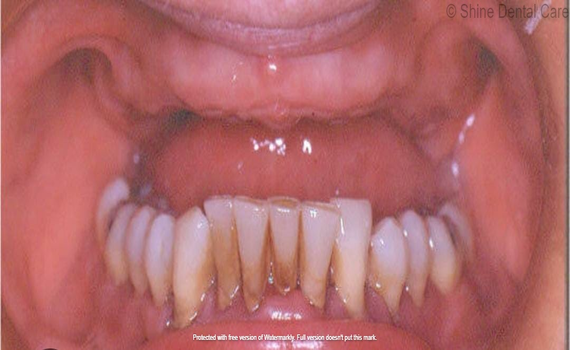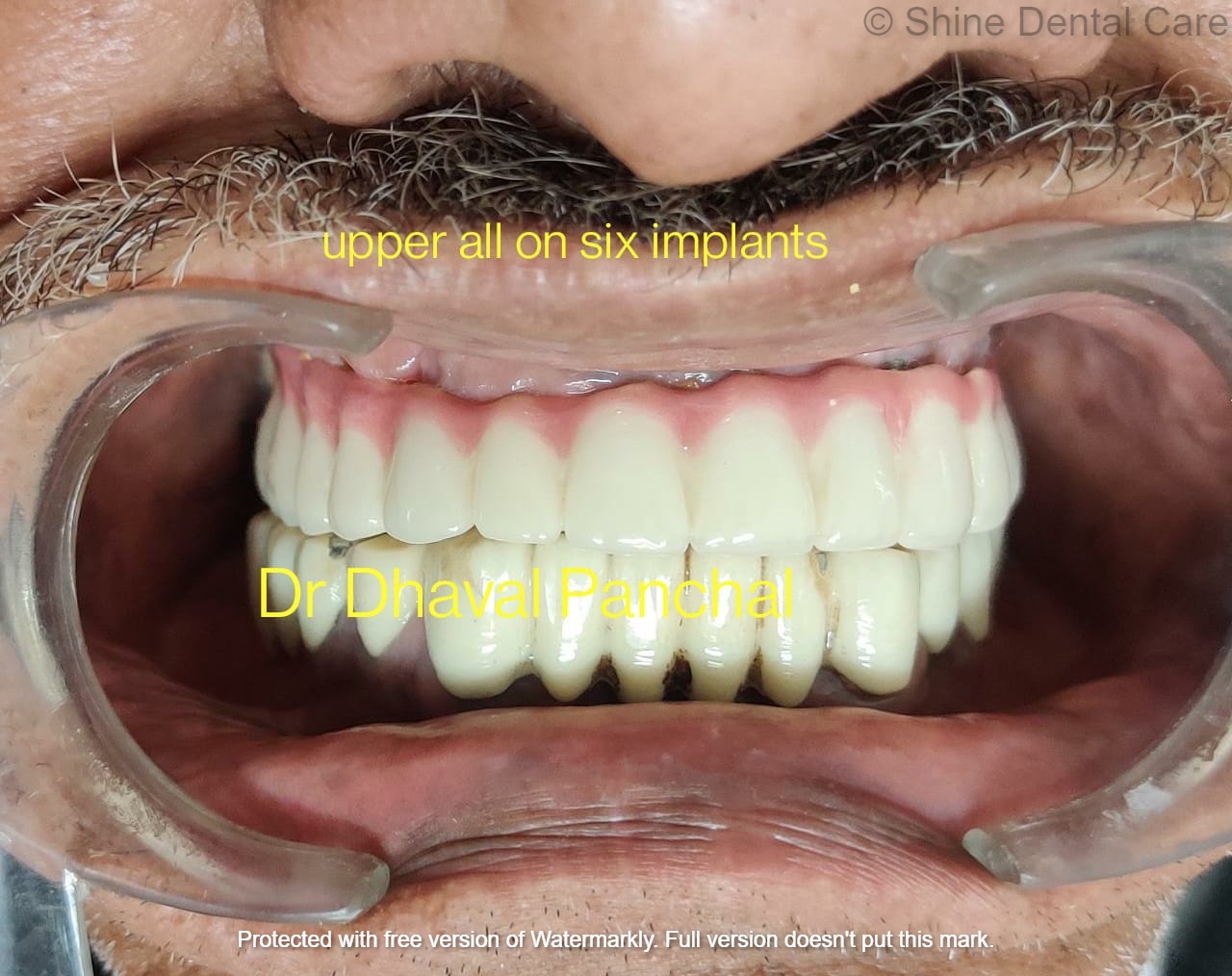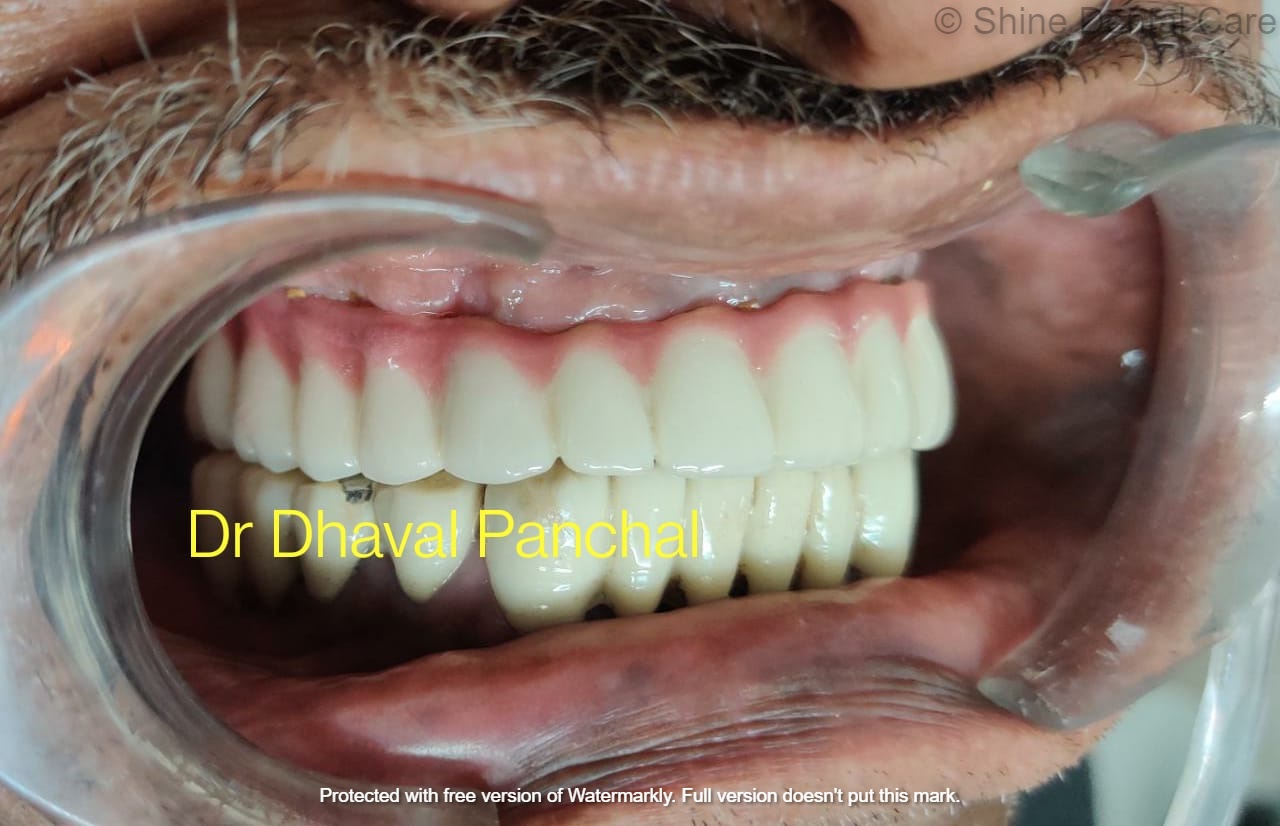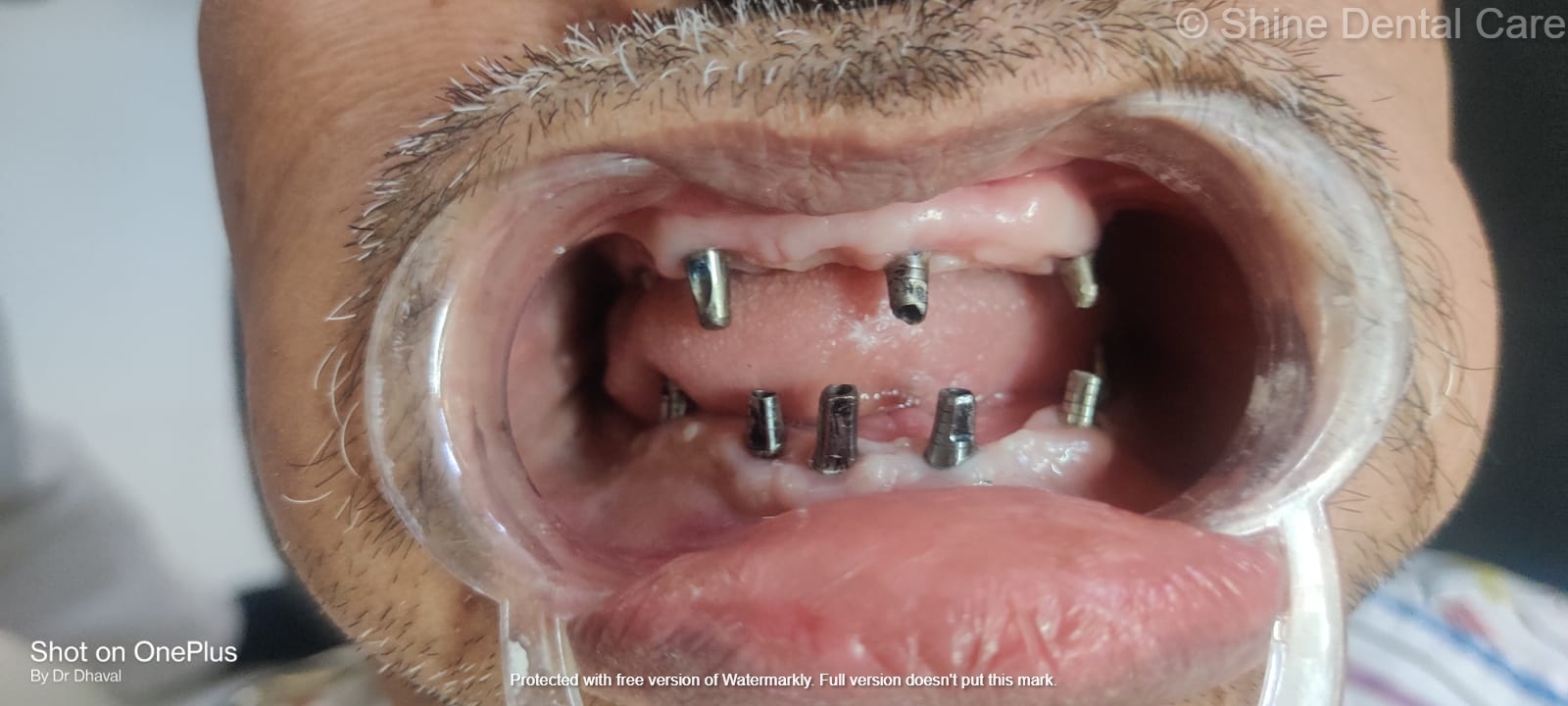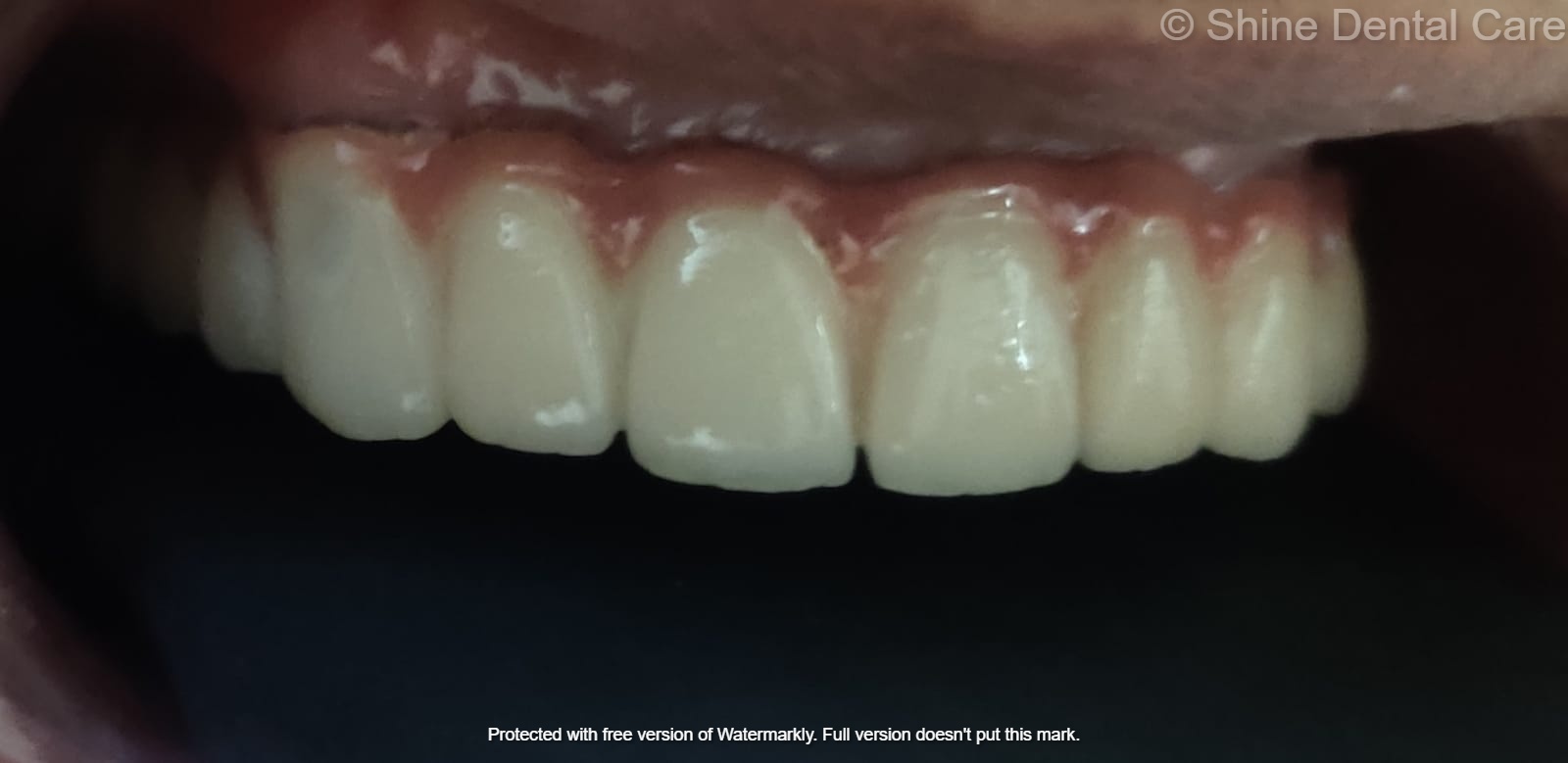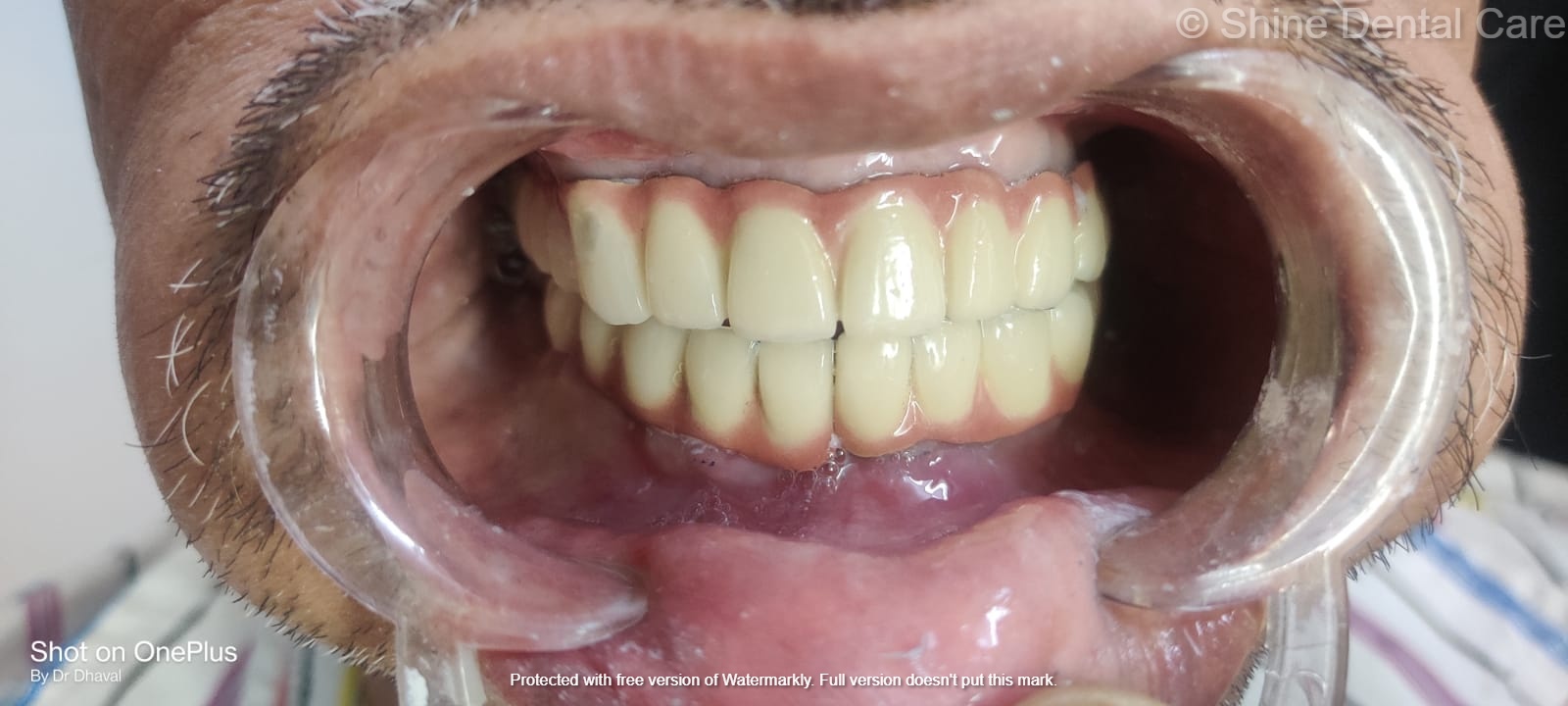
Dental Implants
An artificial dental root that is surgically
inserted into the jaw bone &that can be used
by the dentist as platform for prosthesis.
A dental implant is a structure that
replaces a missing tooth. With screw-like
devices, the surgeon inserts an implant
into the jawbone, and it acts as an anchor
for an artificial tooth, called a crown.
A device called an abutment connects the
artificial tooth to the dental implant.
The crown is custom-made to fit the
person’s mouth and match the color of
their teeth. Crowns look, feel, and function
like natural teeth.
Basically Implants are of two types:
- Conventional Implants
- Basal Implants
Conventional Implants
A conventional dental implant is one of many different types of dental implants. This implant comes in two pieces - component for root and component for teeth. These two components are joined together using a small screw. This implant is an effective permanent solution for missing teeth.
The total time period required for this procedure is about 4-6 months and is divided into 2 trips. The time required for the 1st trip is about 3-4 days. In the second trip to complete the whole treatment, a full week is needed.Basal Implants

Benefits of Basal Implants
- The prosthesis could be repaired within 72 hours of implant surgery. This is time saving compared to instances of traditional implant placements which need bone grafting or augmentation for a total of 1 year or 6 weeks is required for treatment completion using a demand for an interim prosthesis.
- Since basal implants have a single- piece design in which the abutment and body are fused together, the port issues typically faced with either two or three-piece stanaara implants have been prevented.
- The positioning of one bit implant within an edentulous area is frequently intended as flapless protocol that entails minimal bone cutting.
- Acute and despairing periodontal conditions can be treated with basal implants at 1 visit. Following the elimination of periodontal compromised tender tissues and teeth, then the individual is prepared for implant positioning.
- Basal implants are a fantastic selection for diabetics and smokers Implant care incorporates ideal oral hygiene and routine prophylactic examination.
Warning: include(./basicdetails.php): Failed to open stream: No such file or directory in /home/u436684169/domains/shinedentalimplant.com/public_html/footer.php on line 1
Warning: include(): Failed opening './basicdetails.php' for inclusion (include_path='.:/opt/alt/php81/usr/share/pear:/opt/alt/php81/usr/share/php:/usr/share/pear:/usr/share/php') in /home/u436684169/domains/shinedentalimplant.com/public_html/footer.php on line 1
© 2023 Shine Dental Care and Implant Center
